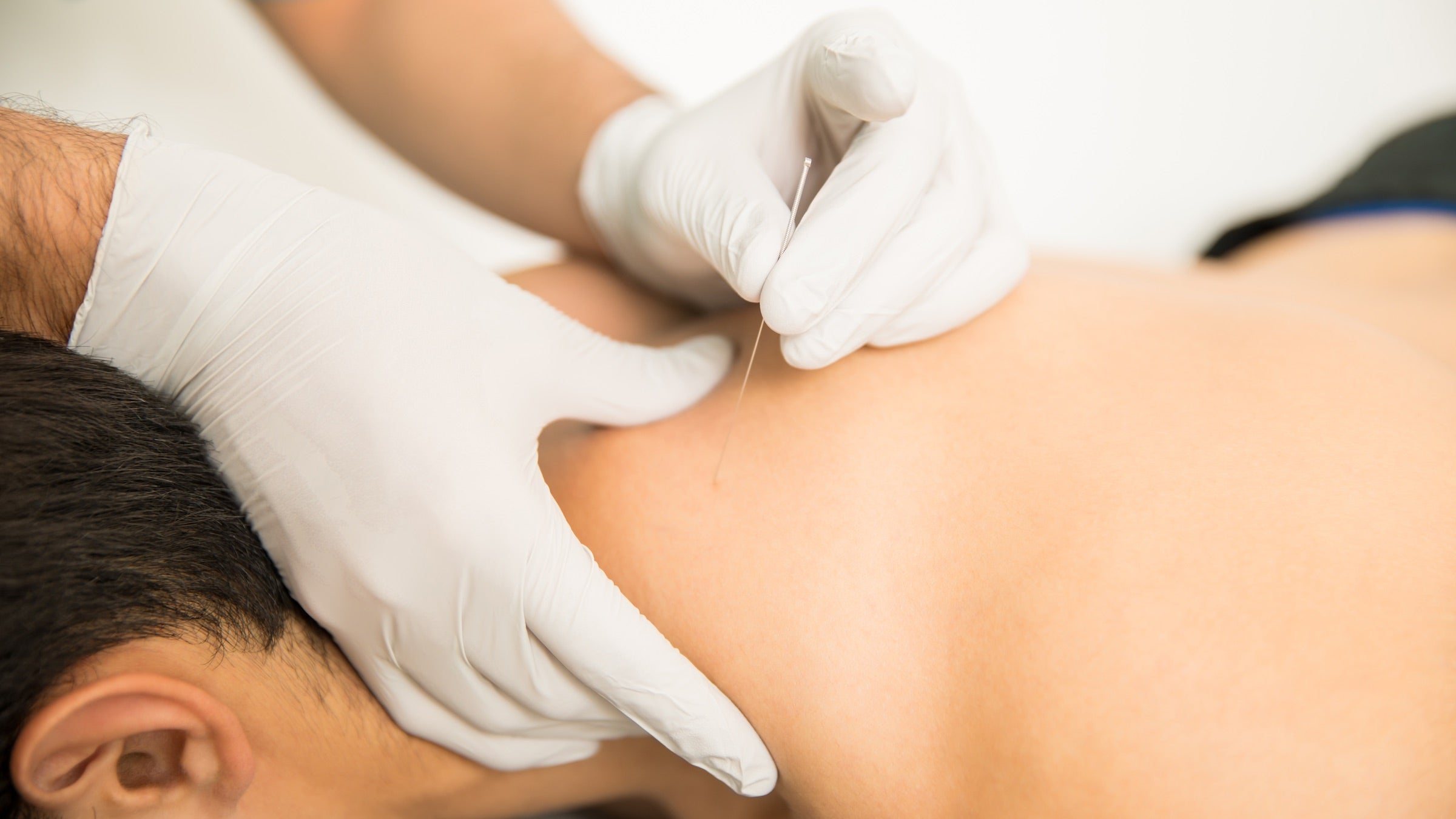Does Dry Needling Help Acute Injuries and Soreness?

Dry needling administered in a clinic to relieve pain. (Photo: Getty Images)
The treatment of muscle pain related to overuse and injury remains a topic of a fair amount of research. For athletes who are constantly putting their bodies through periods of intense and prolonged stress, this is obviously an issue with a fair amount of importance. In order to be able to continue to train at a high level, pain has to be minimized or (at the worst) kept manageable, so athletes are always looking for a way to quickly recover and keep pushing themselves.
For the most part, none of the tried and true remedies have proven any better than any of the others in this regard. Anti-inflammatory medications, massage, heat or cold application, and compression garments all have their proponents, but scientific evidence is lacking to demonstrate the superiority of any one of these over the rest.
A modality that is very popular among physiotherapists and has a growing number of adherents amongst triathletes as well is dry-needling. Not to be confused with acupuncture, wherein a practitioner places needles remote from an injury and aims to manipulate Chi (or Qi)—ie. the “vital life force or energy that runs through all living beings,” dry-needling has the insertion of needles directly in to the afflicted area.
With acupuncture the theory is that by altering Chi the body can be made to restore itself and heal injury, wherein with dry needling myofascial trigger points are directly stimulated with the needle. These trigger points arise as a consequence of overuse or injury and are hyper irritable taut bands of muscle that spontaneously produce pain and when stimulated reproduce the pain of injury.
The actual mechanism by which dry needling is postulated to exert its effects remains unclear. The current working theory is that by stimulating these trigger points there are both local and central responses within the nervous system that result in a reduction in sensitization to and perception of pain. Additional theoretical mechanisms include ascending and descending reflexes in the spinal cord that are activated when the needle is manipulated that results in local changes in muscle tone and less pain and improved range of motion.
While there are many proponents of dry needling, the research on this modality has never produced results worthy of the kind of enthusiasm that it often generates. In study after study that has been done on dry needling, low quality evidence has been produced that suggests that dry needling is better than sham needling or placebo for decreasing pain in certain kinds of musculoskeletal injuries—but only slightly to moderately, and in no case has dry needling ever been shown to improve functional recovery.
“Dry needling is really controversial,” said Dr. Daniel Cushman, associate professor of physical medicine & rehabilitation at the University of Utah. “Some people swear by it, some others think it’s rubbish. My opinion of it is that it has its place but it is certainly not a cure all.” Recently, Cushman led a team that wanted to evaluate dry needling in a very specific context, that being for the reduction of post-race soreness and muscle cramps in recreational runners.
In 2018 at the Salt Lake City Marathon and Half-Marathon, runners were recruited as they finished and randomized to either receive dry needling or sham needling and were then followed for a week afterwards to evaluate whether or not there was any effect from the procedure.
Unexpectedly, dry needling was associated with a statistically and clinically significant decrease in pain compared to sham needling for the first three days after the race, although by day seven there was no difference between the two groups.
With respect to muscle cramps, dry needling was not associated with any difference compared to controls.
Dr. Cushman was nonplussed by these results. “We have seen in many studies on this therapy that it decreases pain but doesn’t really fix anything at the tissue level. The role for this is really best thought of as something that can accelerate pain control in the mind to allow for improved rehabilitation, but more than anything dry needling is an adjunctive treatment and not ever going to be the mainstay to manage injury.”
Still, Cushman does think there are some specific ailments for which dry needling is specifically well suited. “Iliotibial band syndrome and patellofemoral syndrome are examples of ailments associated with biomechanical misalignments and may be particularly amenable to treatment with dry needling. I’m not saying that they are going to get better faster but that people with these problems will feel that their pain will be better managed, allowing them to rehabilitate and address the underlying biomechanics faster and I am interested to see how the research in these areas plays out.”
Furthermore, he believes that even in a broader sense dry needling works for some people far better than for others. “Anecdotally, when we see a lot of higher end athletes who swear by dry needling I think it is probably because it works for them. That placebo effect, if it is a placebo effect, is a good thing and if they are feeling better because of it then that is great.” Cushman has found in his work that people who really believe in dry needling tend to be those who benefit most from it. This would seem to affirm his supposition of a strong and very real placebo effect that should not be discounted.
Still, it is clear that while a select group of people may derive significant benefit from dry needling, most people do not and its role in treating acute injury and soreness seems to be very limited.
The MedTent will answer your science and medical triathlon-related questions. It’s written by Jeff Sankoff, an ER physician, triathlete, and coach who runs TriDoc coaching and hosts the TriDoc podcast.